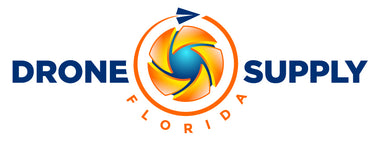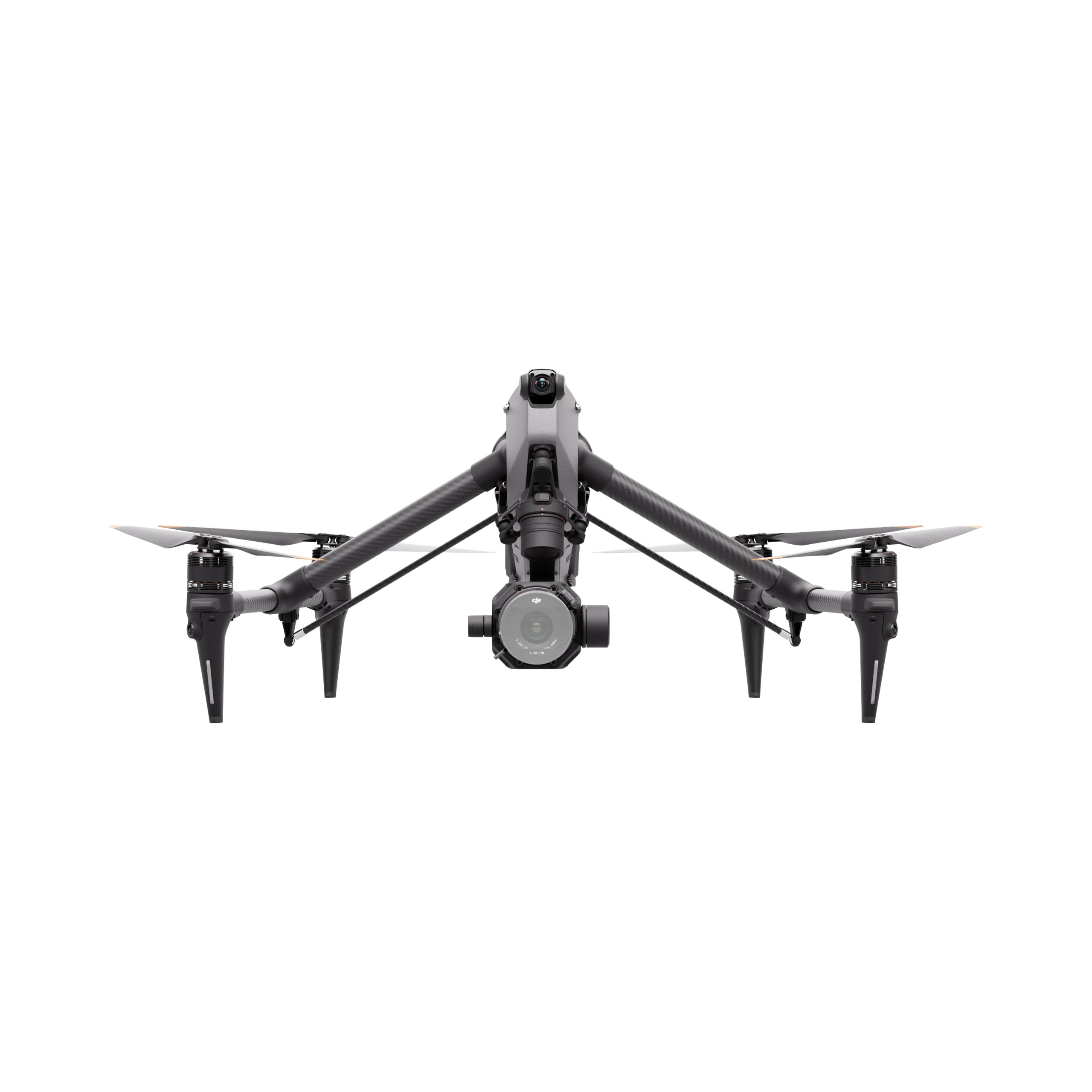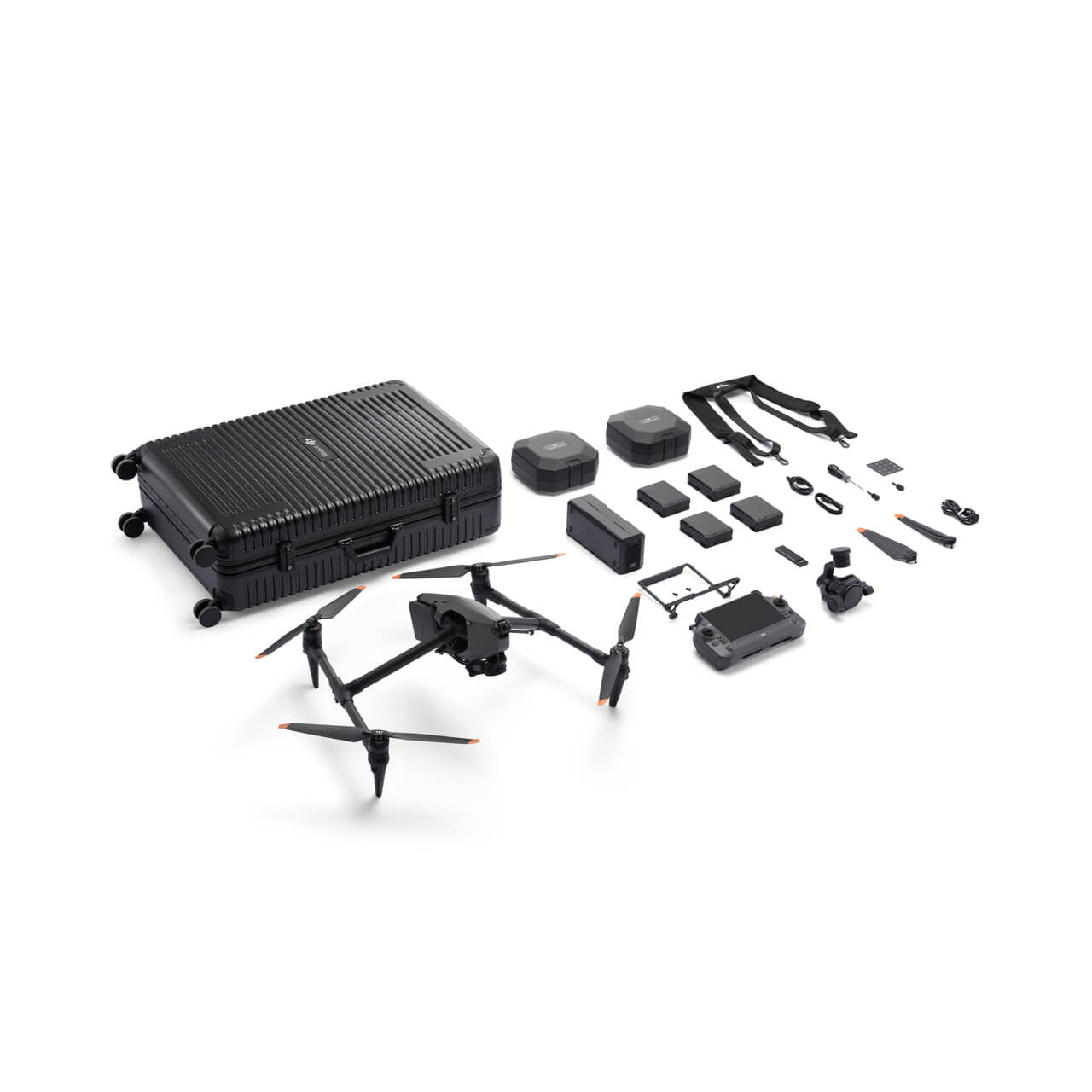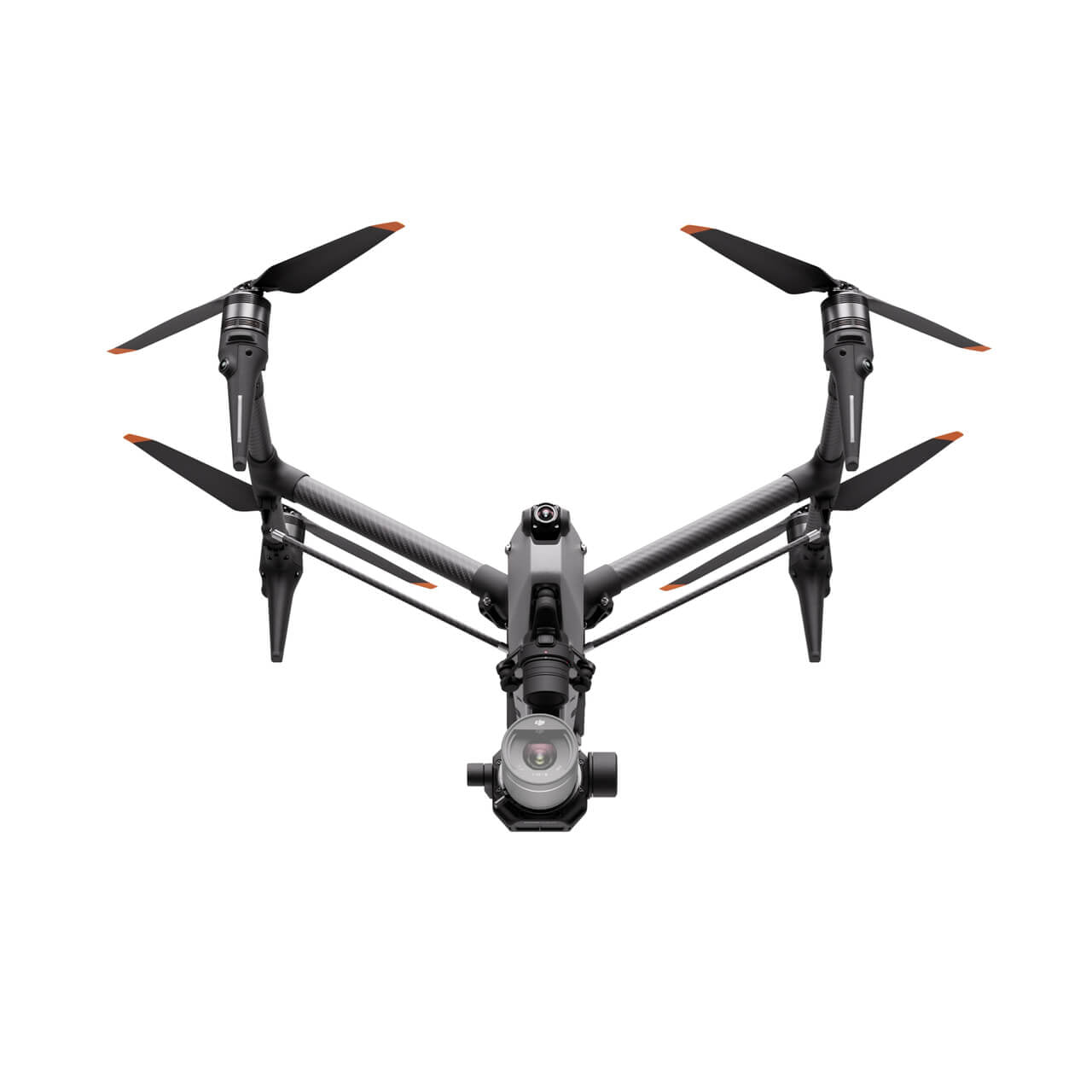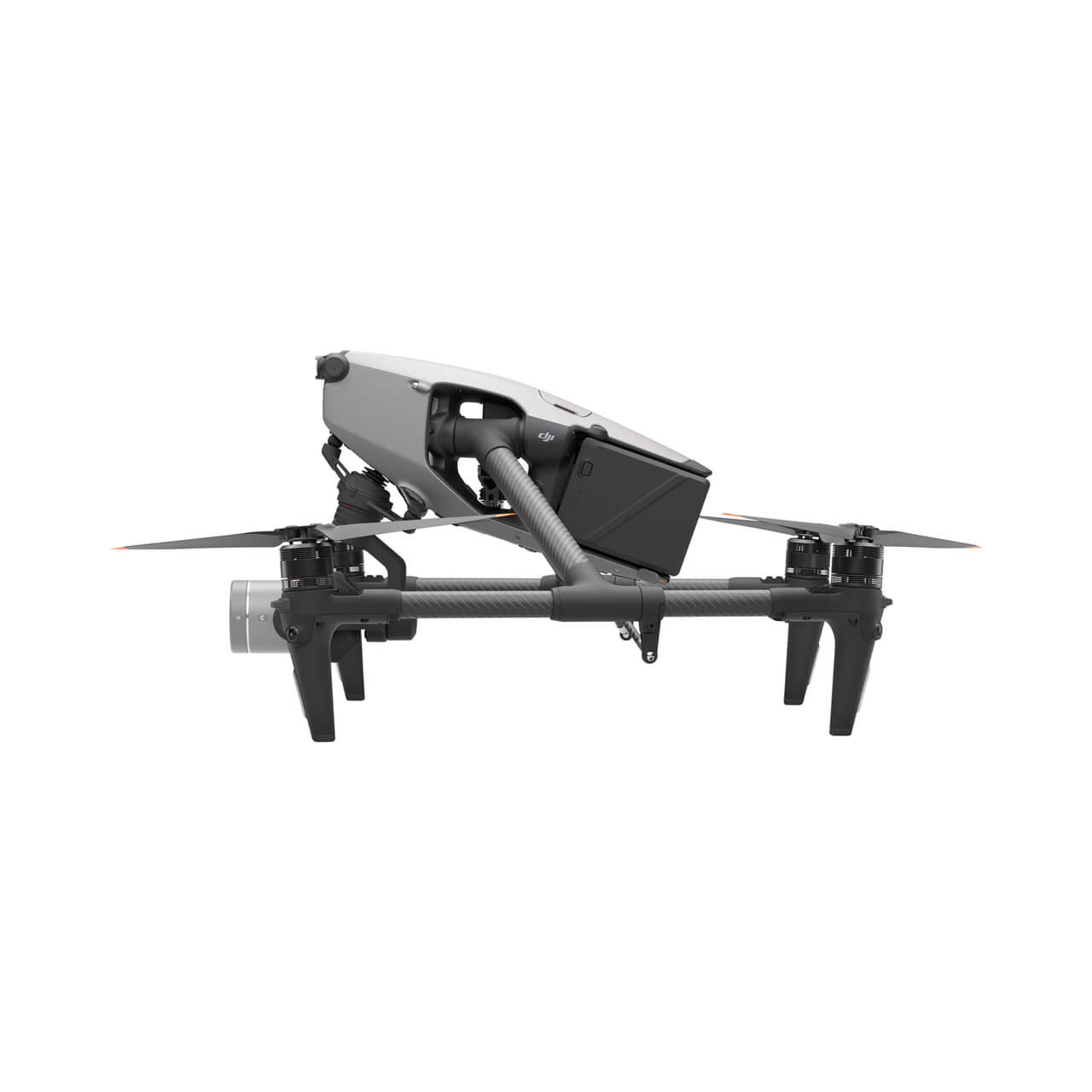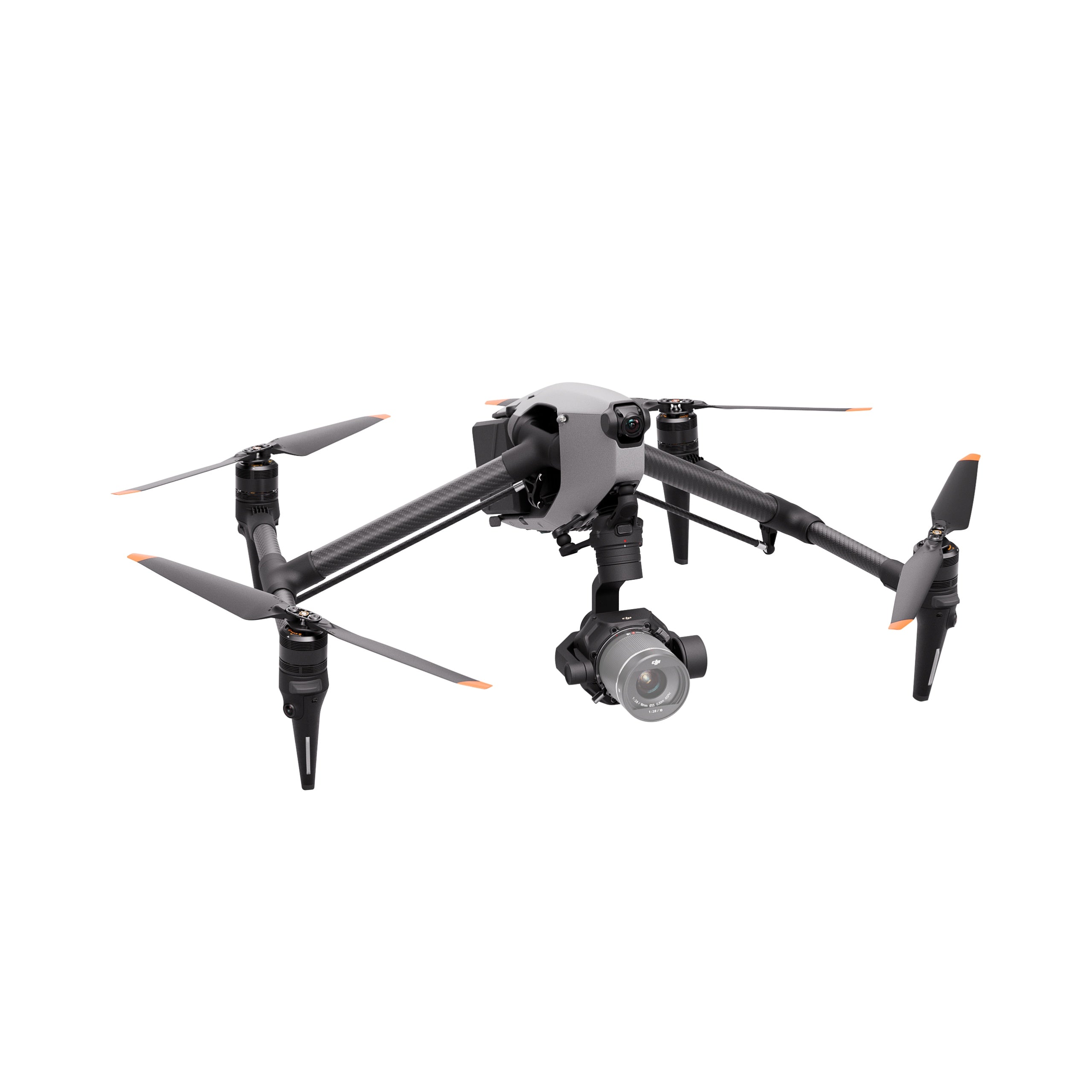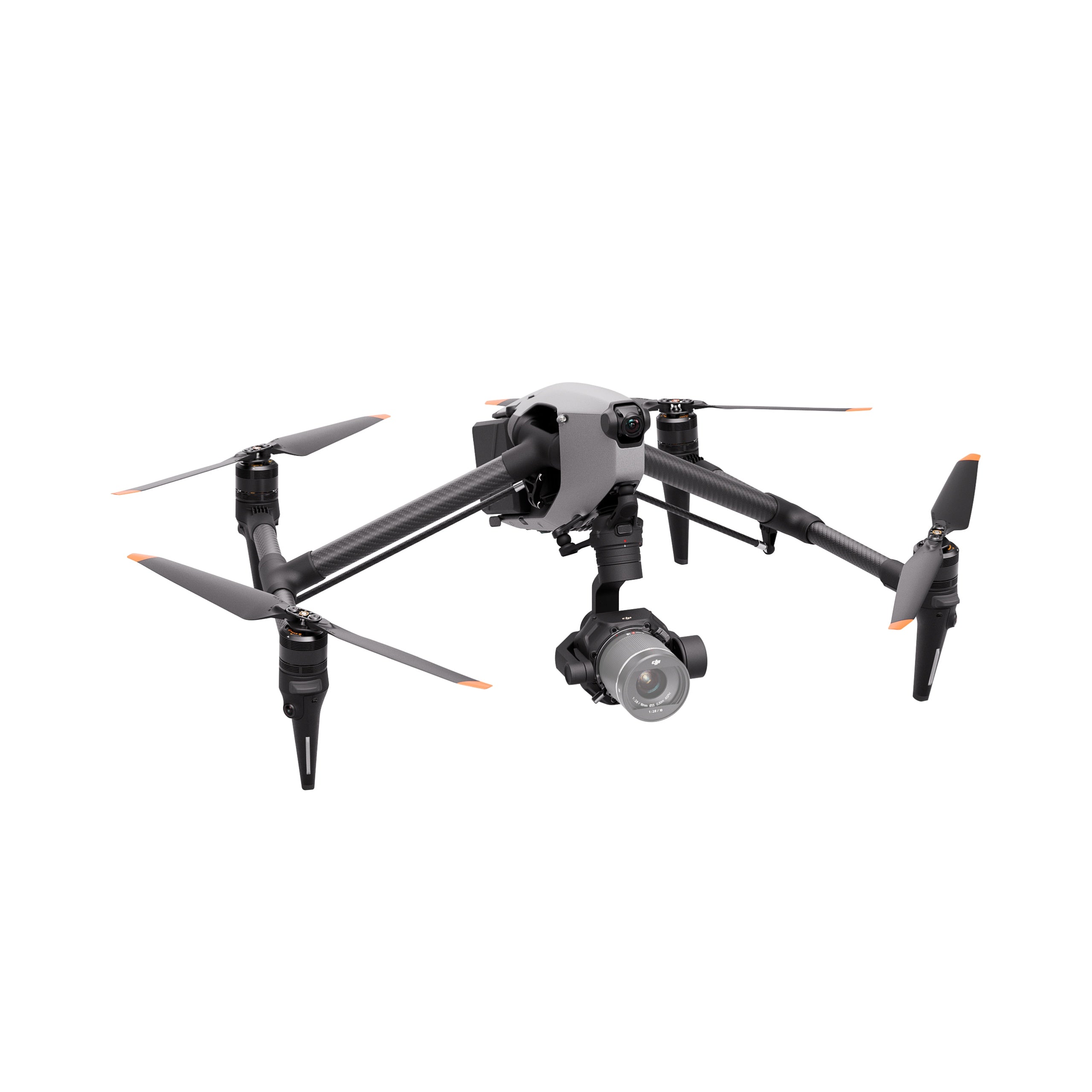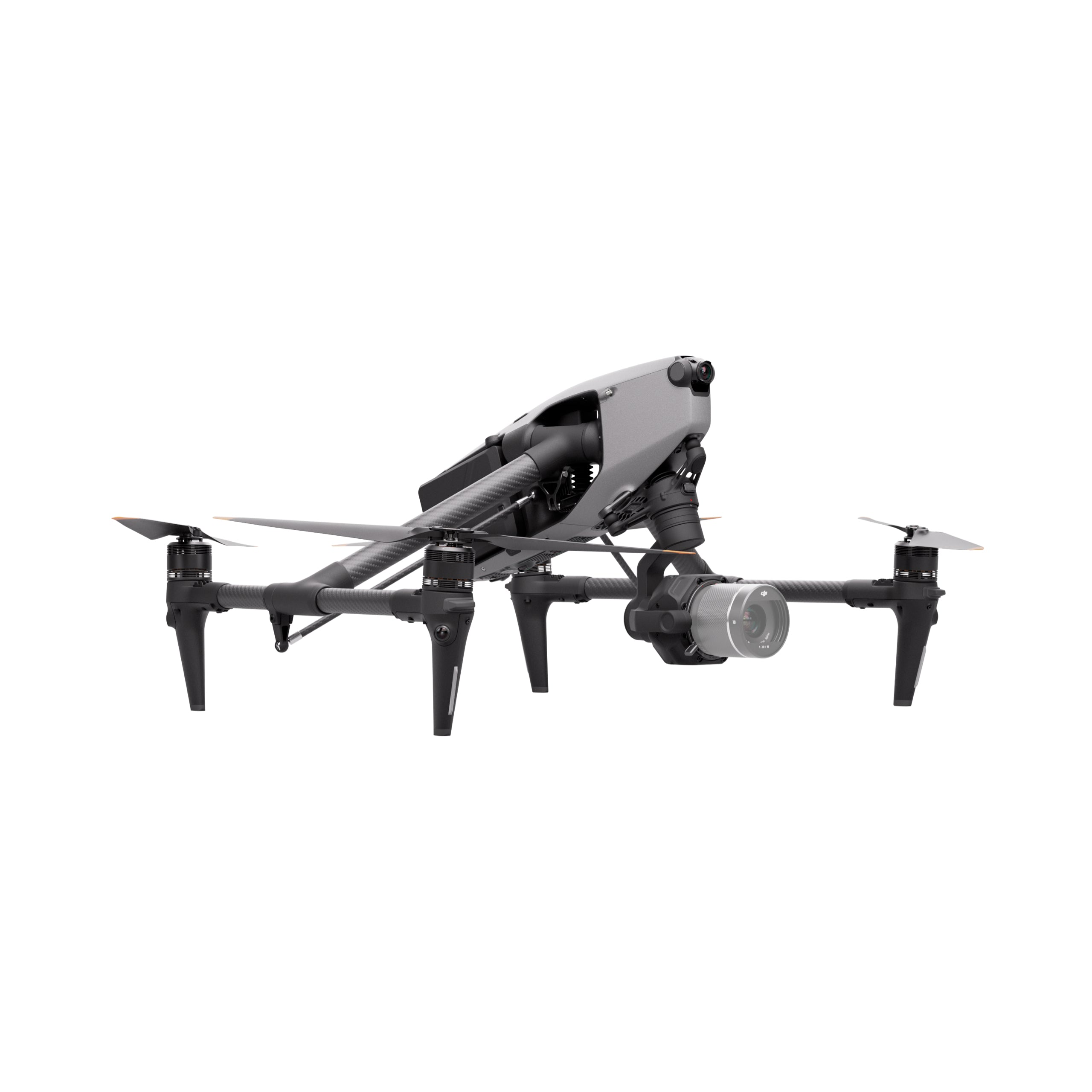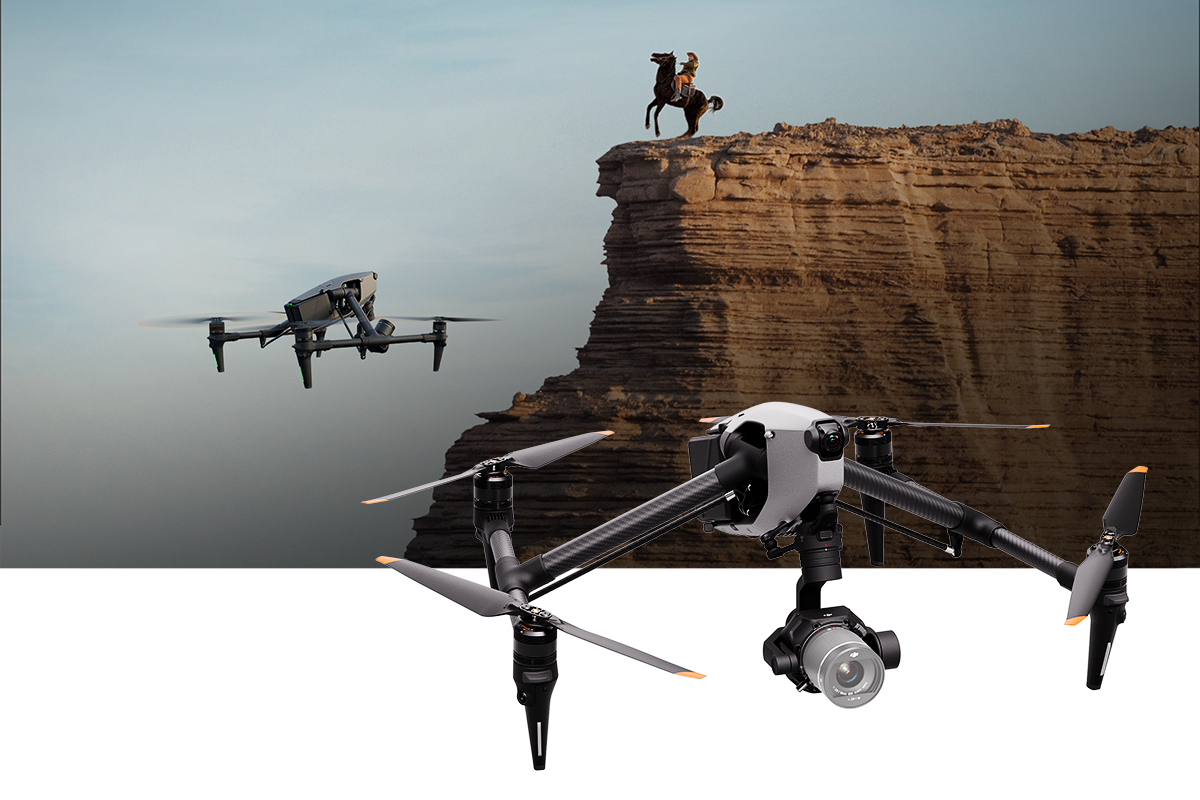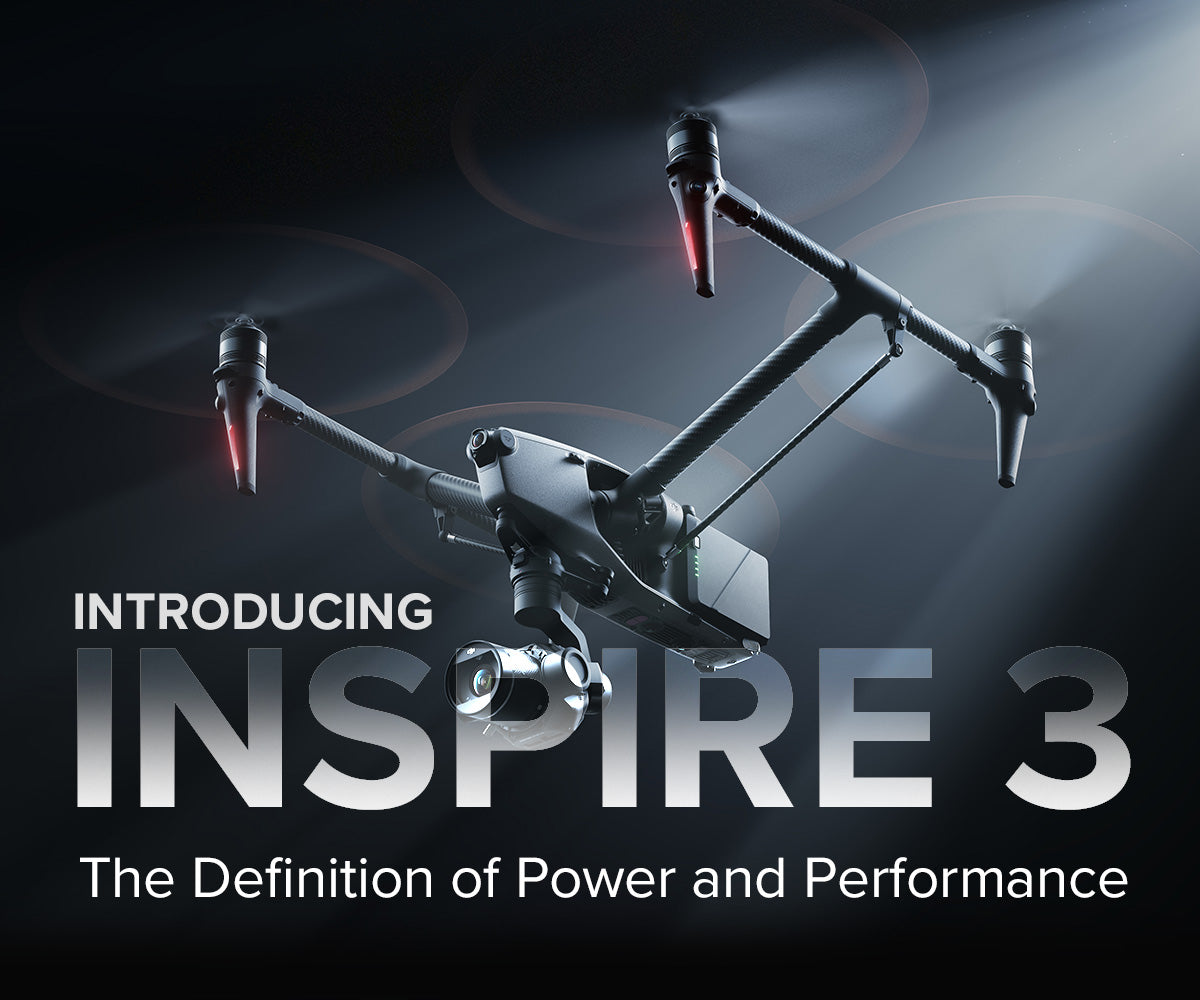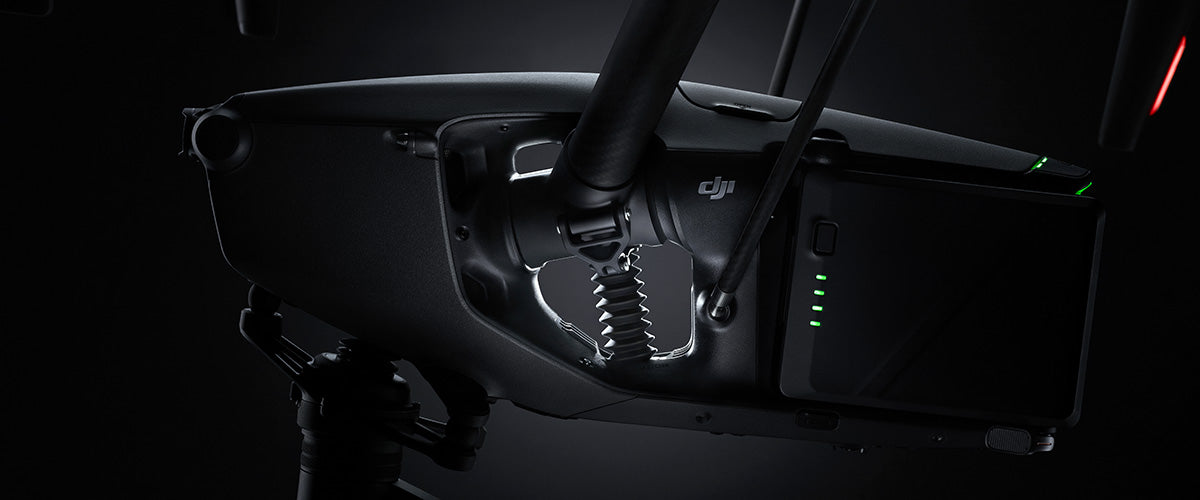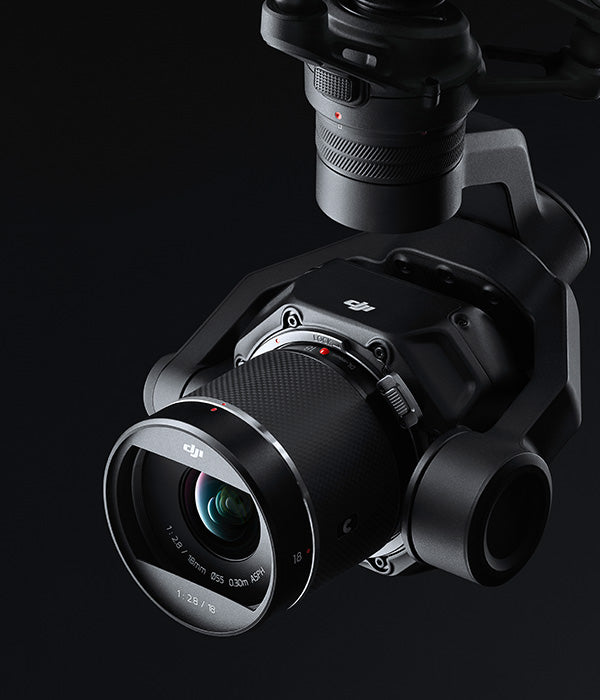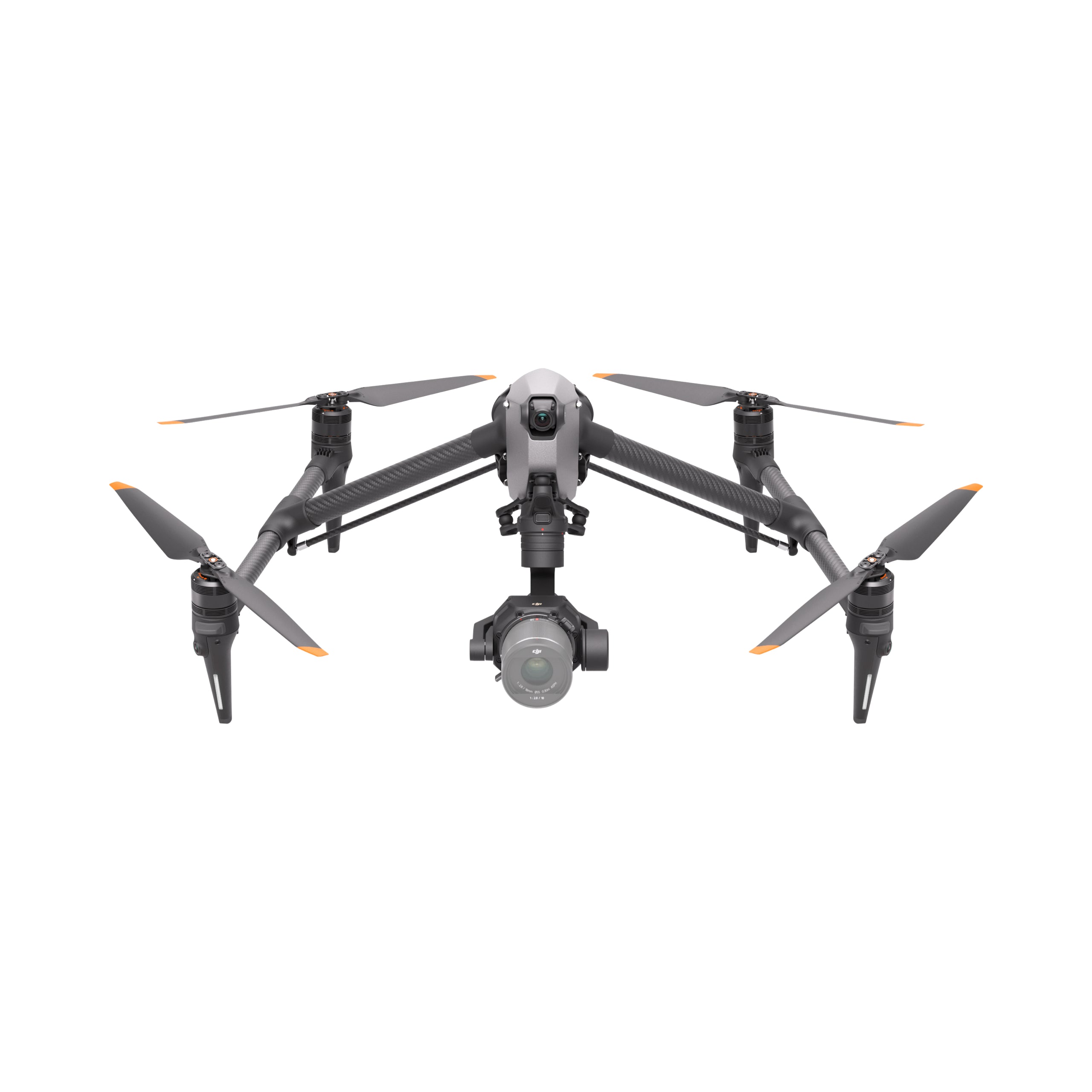Description
At the peak of aerial cinematography, DJI Inspire 3 offers unprecedented workflow efficiency, camera language, and creative freedom. This all-in-one 8K camera drone empowers professional-level filmmakers to fully maximize the potential of any shot and master the unseen.
Inspire 3 is a professional camera drone that adopts a fluid new design that takes aerodynamics fully into consideration to reduce air resistance.
The max dive speed has increased from the 9 m/s of Inspire 2 to 10 m/s, while vertical ascend/descend speed has increased from 6 m/s and 4 m/s to 8 m/s.
Powerful maneuverability delivers responsive, accurate control and an extended flight time of up to 28 minutes.
Centimeter-Level
RTK Positioning
Inspire 3 integrates high-precision RTK positioning technology used in industries such as architecture and surveying to deliver centimeter-level accuracy. [4] Compared with traditional meter-level positioning supported by Global Navigation Satellite Systems (GNSS), RTK not only makes flying more stable, but also makes flight-route planning more accurate, significantly improving creative efficiency.
RTK antennas have been built into the airframe with a new stacked ceramic design, which enables three types of GNSS (GPS, BeiDou, and Galileo) and delivers dual-frequency positioning down to the centimeter level. By activating an RTK network [5] or setting up a D-RTK 2 Mobile Station, [6] users can achieve highly accurate positioning without mounting any additional modules.
Dual-Antenna Orientation
Waypoint Pro
Repeatable Routes
Using Repeatable Routes, the aircraft will automatically fly on the same route and maintain all preset parameters such as altitude, speed, gimbal angle, and camera settings. Repeating the same flight mission allows cinematographers to effortlessly perform difficult one-takes, or to fly at different times in the same place to easily create long-duration timelapses that capture transitions such as day to night or season to season.
3D Dolly
3D Dolly can simulate a crane, cablecam, or dolly on film sets while going far beyond the limitations of those devices.
After planning a flight route, the cinematographer can manually control the aircraft to move along the route back and forth while adjusting parameters such as speed, gimbal angle, and more according to the needs of the shot. This makes complicated cinema-grade camera movements easier and more efficient and can deliver improved visual effects.
Spotlight Pro
When using Spotlight Pro's Follow mode, the aircraft and gimbal camera orient toward the same direction and remain locked on the subject so that the pilot can get circling shots without manual framing adjustments.
Omnidirectional Sensing System
For the first time, a fisheye camera has been added to each of the four landing arms. This design helps to avoid obstruction from the airframe when the landing gear is raised and allows for horizontal obstacle sensing when the landing gear is lowered.
Customizable Obstacle Sensing
In addition, Inspire 3 features a new customizable function to help ensure greater flight safety and more creative freedom. Horizontal, upward, and downward obstacle sensing can be enabled or disabled independently, and an obstacle alert range can be manually set to suit different scenarios.
When active avoidance is turned off, users can still view the distance from an obstacle on the navigation display in real-time and receive an audio alert when an obstacle is within a set range without the aircraft performing an automatic avoidance movement. This brings new possibilities to professional aerial teams that want to achieve more complex camera language
Inspire 3 is equipped with a new 1/1.8-inch-sensor FPV camera with a 3μm pixel size, an ultra-wide DFOV of 161°, and the ability to transmit live feeds at up to 1080p/60fps. Compared to its predecessor, the DFOV is approximately doubled. This FPV camera delivers more impressive light-sensing capability, allowing pilots to observe their surroundings vividly and clearly, even at night, and ensure greater levels of flight safety.
Tailormade 8K Sensor
8K means ultra-high-resolution aerial footage that retains true-to-life texture close to what the human eye sees, with clarity that stuns audiences when displayed on larger screens. RAW brings X9-8K Air's sensor fully into play, providing abundant space for visual effects and color grading.
In S&Q mode, X9-8K Air supports internal recording of up to full-frame 4K/120fps ProRes RAW video without cropping, providing more creative editing options.
Dual Native ISO
X9-8K Air supports dual native ISO. At full-frame 30fps and below, it offers EI 800/4000, supporting the 24fps commonly seen in film productions and the 25fps used in commercial and television productions. At above 30fps, EI 320/1600
is available.
This allows X9-8K Air to record images with exquisite details and minimal noise, even low-light cityscapes or beaches, putting it on par with professional ground-based cinema cameras.
14+ Stops of Dynamic Range
DL Mount Lenses [11]
Inheriting DJI’s proprietary DL mount, X9-8K Air is compatible with an additional 18 mm F2.8 full-frame ultra-wide lens and a new telephoto lens (will be released at a later date) [12] on top of the previous full-frame lens selections of DL 24/35/50 mm F2.8. All five lenses are custom-made for aerial cinematography. The housings are made of lightweight, monocoque carbon fiber, so the lightest lens weighs just 178 g, meeting Inspire 3's requirement for ultra-high maneuverability.
DJI Cinema Color System (DCCS)
Building on DJI's mature color science and technology, the DJI Cinema Color System allows the X9-8K Air to retain authentic colors that redefine the look of aerial cinematography. This applies to natural settings and urban landscapes, and also accurately captures skin tones in different environments and lighting conditions. DCCS ensures effortless color matching between X9-8K Air and ground-based cinema cameras such as DJI Ronin 4D, delivering consistent color style from air to ground to meet the needs of film-production post-editing workflows.
Multi-Camera Timecode Sync
Through the 3.5mm port on the aircraft, you can sync timecode between equipment in the air and on the ground. When dealing with abundant footage from multiple cameras, timecode sync makes the editing process significantly more simplified and efficient.
Cinema-Grade O3 Pro
Video Transmission [13]
Inspire 3 is equipped with O3 Pro, DJI’s cinema-grade video transmission system, which enables a max transmission distance of 15 km in single control mode [14]and 12 km [15] in dual-control mode. Both the gimbal camera and FPV camera support 1080p/60fps live feeds and an ultra-low latency of 90 ms. [16] Compared to the Lightbridge video transmission system of Inspire 2, O3 Pro has taken a generational leap in transmission distance, latency, and stability.
For the first time, 4K/30fps live feeds are also supported with a max 5km transmission distance to meet the needs of UHD monitoring
and livestreaming on set. [17
Independent Links
for Dual Control [18]
Compared with its predecessor, the dual-control experience of Inspire 3 has been significantly upgraded. Two remote controllers can receive live feeds and control the drone independently, so the pilot and gimbal operator can be at different positions on set. This breaks Inspire 2's limitations of binding the primary and secondary control links.
If the pilot loses aircraft signal, the gimbal operator is now able to take control of the aircraft to safely return to home or land directly.
Dual-Battery System
Inspire 3 is equipped with a new TB51 dual-battery system, which utilizes the latest battery chemistry technology for optimized reliability and performance.
TB51 batteries are smaller, lighter, more streamlined, and higher voltage compared to TB50. They provide a 28-minute max flight time [2] and support hot swapping with a redesigned battery release that allows effortless continuous operation.
If the temperature of the battery goes lower than 10° C (50° F), the battery will trigger an auto-heating function, maintaining adequate flight performance even in locations with temperatures as low as -20° C (-4° F).
New Battery Charging Hub
The all-new foldable battery charging hub strikes the optimum balance between charging efficiency and storage size. It can accommodate eight batteries. In Fast mode, it can charge two batteries to 90% in just 35 minutes [21] and eight batteries to 100% in only 160 minutes. [21] The included 65W USB-C port can also be used to charge an RC Plus.
DJI PROSSD 1TB Included
The included DJI PROSSD 1TB supports a max read speed of 900MBps [22] and the footage can be read on a computer directly through the provided USB-C to USB-C cable without the need for a card reader.
Storage and Transitions
The newly designed trolley case is equipped with an extendable handle, two side handles, and four 360-degree-movement wheels, making transitions and transportation effortless. Additionally, two numbered locks are equipped for added safety. The well-designed trolley case can store one aircraft, one X9-8K Air gimbal camera, two RC Plus remote controllers, four lenses, twelve batteries, two battery charging hubs, three propeller sets, and more. New foldable quick-release propellers are easy to store and don’t require re-installation before each flight.
Specs
- Full-frame 8K/75fps ProRes RAW
- Full-frame 8K/25fps CinemaDNG
- Dual Native ISO
- 80° Tilt Boost or 360° Pan Dual Configurations
- High Dynamic Range of 14+ Stops
- 1/1.8-inch Ultra-Wide Night-Vision FPV Camera
- Centimeter-Level RTK Positioning and Waypoint Pro
- O3 Pro Video Transmission with Dual-Control
- DL-Mount Lens Selection
Image Quality

In The Box
- 1 Inspire 3 Aircraft
- 1 RC Plus (Inspire 3)
- 1 Double-Headed Screwdriver
- 1 USB-C to USB-C High-Speed Data Cable
- 1 USB-C to USB-A Data Cable
- 6 TB51 Intelligent Battery
- 1 TB51 Intelligent Battery Charging Hub
- 1 TB51 Intelligent Battery Charging Hub AC Cable
- 1 TB51 Intelligent Battery Paired Batteries Sticker
- 3 Inspire 3 Foldable Quick-Release Propellers (Pair)
- 1 PROSSD 1TB
- 1 Inspire 3 Trolley Case
- 1 RC Plus Strap
- 1 RC Plus Waist Support
- 3 Documents
- 1 Zenmuse X9-8K Air Gimbal Camera
- 1 Zenmuse X9-8K Air Gimbal Camera Case
- 1 DL Mount Lens Cap
- 1 X9 Gimbal Base Cap
- 1 Lens Carrying Box (18/24/35/50mm)
- 2 Inspire 3 Gimbal Rubber Dampers

FAQ
-
Can I use DJI Inspire 3 with the X9 gimbal camera, TB50 battery, and storage card of DJI Ronin 4D interchangeably?
The gimbal camera and TB50 battery are not interchangeable. The storage card is interchangeable.
To improve DJI Inspire 3’s battery life, flight experience, and performance and stability at all attitudes and speeds, Inspire 3’s X9-8K Air gimbal camera has been optimized specially for aerial photography. Compared with the X9-6K and X9-8K gimbal cameras of Ronin 4D, the X9-8K Air’s weight is reduced by approximately 50% with a centralized center of gravity, ensuring an improved flight time and flight experience. Additionally, the gimbal axis arms and lens locking design adopt optimized vibration-proof designs for aerial photography so that the aircraft can stay stable even during dramatic or high-speed flight maneuvers.
The new TB51 battery features higher energy density with reduced weight, and size, which is beneficial for the total flight time and wind resistance when flying forward, and is more advantageous than TB50 in terms of discharge voltage and reliability.
The DJI PROSSD 1TB of DJI Ronin 4D is interchangeable with Inspire 3.
Both the X9-6K and X9-8K gimbal cameras of DJI Ronin 4D weigh approximately 1.04 kg, while the X9-8K Air of DJI Inspire 3 weighs approximately 516 g, for a weight reduction of approximately 50%.Are the gimbal camera, remote controller, storage card, and battery of DJI Inspire 3 interchangeable with those of DJI Inspire 2?
No.
All modules of DJI Inspire 3 have been redesigned to deliver fully upgraded performance in terms of flight, imaging, video transmission, storage, and battery life.
Gimbal Camera: DJI Inspire 3 comes with the X9-8K Air gimbal camera with a newly designed gimbal camera quick-release port that meets the data transmission requirements of 8K CinemaDNG videos, and further ensures stable gimbal connection during flight.
Remote Controller: DJI Inspire 3 comes with the professional-level DJI RC Plus and professional accessories such as a strap and waist support. The DJI RC Plus supports O3 Pro, a cinema-grade video transmission system that has taken a generational leap in transmission distance, latency, and overall stability. The 7-inch high-bright screen delivers up to 1,200-nits of brightness to provide an extraordinary outdoor monitoring experience. It also features several buttons and dials on the front, back, and top, which enable fast and intuitive operation. Button functions can also be customized. The built-in battery of RC Plus provides an operating time of approximately 3.3 hours, and extends to 6 hours with an external WB37 battery. It also supports battery hot-swapping to improve creative efficiency. On top of the classic flight control interface, the new DJI Pilot 2 app for Inspire adds a cinema-grade monitoring interface, which allows simple and convenient checking of information like camera exposure, video specifications, focal length, and gimbal angle, easily meeting the monitoring requirements of gimbal operators and DPs.
Storage: The included DJI PROSSD 1TB supports a max read speed of 900MBps for recording high-frame-rate videos of 8K CinemaDNG, and the footage can be read on a computer directly through the provided USB-C to USB-C cable without the need for a card reader, convenient for DITs.
Battery: DJI Inspire 3 is equipped with six TB51 intelligent batteries and an all-new battery charging hub. TB51 batteries utilize the latest battery chemistry technology for optimized reliability and performance, and are smaller, lighter, more streamlined, and higher voltage compared to TB50. They provide a 28-minute max flight time and support hot swapping. The all-new foldable battery charging hub can accommodate eight batteries. In Fast mode, it can charge two batteries to 90% in just 35 minutes and eight batteries to 100% in only 160 minutes. The included 65W USB-C port can also be used to charge an RC Plus.
Measured using the included USB-C to USB-C data cable with an Apple MacBook Pro 2021 (Apple M1 Max chip). Measured when flying forward at a constant speed of 36 kph with the landing gear down in a windless environment at sea level, with gimbal camera and lens attached to the aircraft and without other accessories, and recording 4K/24fps H.264 (S35) video until the battery reached 0%. This data is for reference only. Please refer to the actual values in the app. Tested when charging two batteries to 90% and to 100% with the battery charging hub at a room temperature of 25° C (77° F) in a well-ventilated environment. This data is for reference only.Compared to DJI Inspire 2, what major upgrades does Inspire 3 have?
DJI Inspire 3 features a sleek and integrated design, a high-mobility flight system, a full-frame 8K imaging system, O3 Pro video transmission and control system, and efficient full-scenario operation. Compared with DJI Inspire 2, the image quality and operation efficiency of Inspire 3 is significantly improved. This delivers greater creative freedom and an enhanced aerial cinematography experience.
What is DJI Inspire 3’s max horizontal speed?
94 kph
Measured when flying in a windless environment with gimbal camera and lens attached to the aircraft and without other accessories. Data is for reference only.What is DJI Inspire 3’s max takeoff weight?
Approx. 4310 g
What is DJI Inspire 3’s max wind resistance?
12 m/s during takeoff/landing, and 14 m/s during flight.
Measured when flying in a windless environment at sea level, with gimbal camera and lens attached to the aircraft and without other accessories. Data is for reference only.What DJI Inspire 3’s max flight time?
Inspire 3’s max hovering time is approx. 25 minutes, and the max forward flying time is approx. 28 minutes.
The max hovering time was measured when hovering in a windless environment at sea level with gimbal camera and lens attached to the aircraft and without other accessories, with landing gear raised, and recording 4K/24fps H.264 (S35) video until the battery reached 0%. The forward flying time was measured when flying forward at a constant speed of 36 kph in a windless environment at sea level, with gimbal camera and lens attached to the aircraft and without other accessories, with landing gear lowered and recording 4K/24fps H.264 (S35) video until the battery reached 0%. This data is for reference only. Please refer to the actual values in the app.Does Inspire 3 have an obstacle sensing system?
Yes. Inspire 3 is equipped with an omnidirectional visual sensing system to detect obstacles in all directions, providing comprehensive protection for flying.
Obstacle sensing is disabled while the landing gear is in the process of being raised or lowered. When the landing gear is down, there are obstacle-avoidance blind spots at the front-left and front-right areas of the aircraft of approximately 20°.How do I achieve the largest tilt and pan angles with the DJI Inspire 3 gimbal camera?
When the landing gear of DJI Inspire 3 is raised, it supports 360° pan shooting obstruction-free. When the landing gear is lowered and the gimbal camera faces forward, it can achieve 80° tilt shooting obstruction-free.
What are the dimensions of DJI Inspire 3?
When the landing gear is raised, the diagonal distance is approx. 695 mm;
When the landing gear is lowered, the diagonal distance is approx. 685 mm;
Travel Mode Dimensions 500.5×709.8×176 mm (length×width×height).Can I control the tilt axis of the FPV camera?
Yes. When the remote controller is using the default settings, turn the wheel on the upper left to control the tilt axis.
What lenses are compatible with Zenmuse X9-8K Air?
DL 18 mm F2.8 ASPH Lens
DL 24 mm F2.8 LS ASPH Lens
DL 35 mm F2.8 LS ASPH Lens
DL 50 mm F2.8 LS ASPH LensCompared to the Zenmuse X7, what major upgrades does the image sensor of Zenmuse X9-8K Air have?
Zenmuse X9-8K Air is equipped with a full-frame image sensor that can record video at up to 8K RAW. It supports 14+ stops of dynamic range and dual native ISO to retain more details, meeting the needs of a wide variety of cinematography scenarios.
In terms of lens mounting, what is the difference between the Zenmuse X9-8K Air and the Zenmuse X7?
Zenmuse X9-8K Air has added a lens locking lever. After mounting the lens, tighten the locking lever to secure the lens and further reduce shake. Before detaching the lens, make sure that the lens locking lever is in the unlocked position.
Can I use Zenmuse X9-8K Air independently from DJI Inspire 3?
No. Zenmuse X9-8K Air is only compatible with DJI Inspire 3. To get the same-level image quality on a ground-based platform, DJI Ronin 4D is recommended.
Are the CinemaDNG and Apple ProRes RAW codecs supported by the Zenmuse X9-8K Air included when I purchase the DJI Inspire 3?
No. The license is sold separately. Recording CinemaDNG or Apple ProRes RAW video will be supported after purchasing the license.
Can I use the new DL 18 mm F2.8 lens with the Zenmuse X7 DL/DL-S lens ND filters?
No. The diameter of Zenmuse X7 DL/DL-S lens ND filters is 46 mm, while the diameter of the new DL 18 mm F2.8 lens is 55 mm. We recommend using the following third-party filters:
B+W: ND64 Filter φ55mm; Nisi Ex-Color: ND64 Filter φ55mm; Kase: ND8 Filter φ55mm. Tested in March of 2023.What are the highlight features of DJI Inspire 3’s video transmission system?
DJI Inspire 3 adopts the all-new O3 Pro video transmission system, which supports simultaneous video transmission of the gimbal camera and the FPV camera. Both the gimbal camera and FPV camera support HD, 1080p/60fps live feeds with latency as low as 90 ms. 4K/30fps UHD live feeds are also supported to meet the needs of monitoring and livestreaming on set.
The lowest latency of the gimbal camera was measured when recording 4K/60fps ProRes RAW video. The lowest latency of the FPV camera was measured with strong video transmission signals.How do I enable 4K/30fps live feeds on DJI Inspire 3?
4K/30fps live feeds are only available when recording video at 30 fps or below. Tap the settings button “…” on the right of the top menu bar on the DJI Pilot 2 app and enable this live feed specification on the image transmission settings page.
Since the 4K/30fps video transmission is highly dependent on the video transmission bitrate. When the video transmission bitrate is lower than 10Mbps, it is recommended to manually adjust the resolution to 1080p (auto adjustment not supported). When the communication quality is poor, the frame rate of the FPV camera live feeds and the gimbal camera will automatically adjust in order to improve the display quality. After the communication quality improves, the frame rate will automatically adjust to the default frame rate. In order to ensure flight safety, when the communication quality is poor, priority will be given to the live feed quality of the FPV camera. When enabling 4K/30fps live feeds, it is normal for the video transmission distance to be reduced. Check the DJI Inspire 3 User Manual for more details.Does DJI Inspire 3 support using dual remote controllers at the same time?
Yes. In the new dual-control mode, two remote controllers can receive live feeds and control the drone independently, so the pilot and gimbal operator can be at different positions on set during flight. Check the DJI Inspire 3 User Manual for more details.
What are the max video transmission distances of the gimbal camera and the FPV camera in single control mode and dual-control mode?
Single control mode:
FPV Camera: approx. 15 km (FCC), 8 km (CE/SRRC/MIC). Gimbal Camera (1080p/60fps live feeds): approx. 13 km (FCC), 7 km (CE/SRRC/MIC). Gimbal Camera (4K/30fps live feeds): approx. 5 km (FCC), 3 km (CE/SRRC/MIC).
Dual-control mode:
FPV Camera: approx. 12 km (FCC), 6.4 km (CE/SRRC/MIC). Gimbal Camera (1080p/60fps live feeds): approx. 11.2 km (FCC), 5.6 km (CE/SRRC/MIC). Gimbal Camera (4K/30fps live feeds): approx. 4 km (FCC), 2.4 km (CE/SRRC/MIC).
Measured in an unobstructed outdoor environment free of interference, with gimbal camera and lens attached to the aircraft and without other accessories. The above data shows the farthest communication range for one-way, non-return flights under each standard. During your flight, please pay attention to reminders in the app.Does DJI Inspire 3 support the DJI High-Bright Remote Monitor?
Yes. DJI High-Bright Remote Monitor can pair directly with Inspire 3 to receive live feeds, and can even control gimbal and focus when the Ronin 4D Hand Grips are attached. HDMI and SDI ports on the remote monitor can also output live feeds to other monitoring devices.
What is the operating time of a fully charged DJI RC Plus? How long does it take to fully charge?
When using only the built-in battery, DJI RC Plus provides a max operating time of approx. 3.3 hours. Using the built-in battery in addition to an external battery provides a max operating time of approx. 6 hours.
It takes approx. 2 hours to fully charge the built-in battery. Charging time when using the built-in and external batteries together:
a. Approx. 2 hours with the external battery (0% battery level) mounted and the battery level of the built-in battery is also 0%.
b. Approx. 70 minutes with the external battery (0% battery level) mounted and the battery level of the built-in battery is 100%.
It is recommended to use the included battery charging hub and the USB-C to USB-C high-speed data cable for optimal charging. The charging time may vary according to ambient temperature.Why am I unable to charge two batteries simultaneously with the battery charging hub?
When the remaining battery levels of the paired batteries are not the same, the battery charging hub will charge the one with less power first. When the batteries show the same power, the battery charging hub will charge the paired batteries simultaneously.
Why are batteries paired?
Paired batteries will charge and discharge together to maximize flight time and battery life and to optimize the flight experience. Unpaired batteries can still be used, but this may affect the flight time and battery life.
How do I pair batteries?
After unboxing, the two batteries can be marked with a battery pairing sticker, or pair the two batteries with similar cycle counts in the DJI Pilot 2 app.
How do I know if the batteries are correctly mounted?
When the battery is inserted in place, the battery release will make a clicking sound. If the battery is not mounted correctly, the DJI Pilot 2 app will prompt “Battery not properly installed.”
Can I take off with the aircraft if the two batteries have different power levels?
When the battery temperature is higher than 5° C (41° F), the aircraft can take off as long as the power discrepancy is less than 21% and the voltage discrepancy is less than 0.7 V.
When the battery temperature is lower than 5° C (41° F), the aircraft can take off when the power discrepancy is less than 8% and the voltage discrepancy is less than 0.1 V.
The aircraft cannot take off if the aforementioned conditions are not met, and the DJI Pilot 2 app will prompt that the power discrepancy is too large.How should I store the batteries if I am not using them for a long duration of time? What is the max storage time?
It is recommended to store the batteries separately in a dry environment at room temperature of approx. 25° C (77° F). Do not insert the battery into the aircraft or the charging hub for storage. It is recommended to fully charge and discharge the batteries every three months in order to maintain battery health. Battery self-discharge will be triggered if the battery level is higher than 60%. Discharging the battery level to 60% can extend battery life. To store a fully charged battery, set the battery self-discharge time to 1 day and have it discharge to 60% quickly.
How do I update the firmware of the batteries?
You can update the batteries in the following two ways:
1. Make sure the aircraft has been updated to the latest firmware. Mount the batteries to the aircraft, power on the aircraft and the remote controller. A prompt will appear on the home page of the DJI Pilot 2 app if a battery firmware update is needed. Tap the prompt to update. If there is no prompt, an update is not needed.
2. Connect the DJI RC Plus to the internet. Connect the remote controller and the battery charging hub with the USB-C to USB-A cable. Insert the batteries into the battery charging hub. Enter the battery charging page on the DJI Pilot 2 app. Select battery charging hub update and then update.Does DJI Inspire 3 support battery hot swapping?
Yes. When replacing the battery, the aircraft does not need to power off.
Can I take DJI Inspire 3’s batteries in carry-on baggage when boarding an airplane?
Yes. The capacity of a DJI Inspire 3 Intelligent Battery is 4280 mAh and the energy is 98.8 Wh. Most aviation companies regulate that batteries under 100 Wh can be transported in carry-on baggage.
Regulations regarding LiPo batteries in carry-on baggage can vary by country and region. Consult your local airline and the relevant authorities of the departure and destination locations.Do I need to detach the propellers before putting DJI Inspire 3 into the trolley case?
The new foldable propellers do not need to be removed from the aircraft when placing Inspire 3 inside the trolley case for transportation or storage. Check the official tutorial for more details. For long-duration transportation or shipping, it is recommended to remove the propellers and place them into the corresponding storage compartment of the trolley case.
What is the default password of the trolley case? How do I change the password?
The default password of the trolley case is 000. To change the password, follow the steps below:
1. Toggle the resettable switch on the rear of the lock to SET.
2. Adjust the dials to set a personal combination code.
3. Toggle the resettable switch to OFF to finish setting.What are the advantages of Inspire 3’s high-precision RTK positioning technology?
High-precision RTK positioning technology empowers DJI Inspire 3 to achieve centimeter-level positioning, which not only makes flying more stable, but also ensures more accurate flight-route planning and execution with the new Waypoint Pro feature. DJI Inspire 3 also supports use with an RTK base station and network RTK. You can choose flexibly according to the application scenario.
Does DJI Inspire 3 support timecode synchronization?
Yes. Through the 3.5mm port on the aircraft, you can sync timecode between equipment in the air and on the ground. When dealing with abundant footage from multiple cameras, timecode sync makes the editing process significantly more simplified and efficient.
What is the model of the DJI Inspire 3 propellers?
Standard propellers: DJI 1671
High altitude propellers: DJI 1676Does DJI Inspire 3 come with high altitude propellers?
No. High altitude propellers are sold separately and are used only when the altitude is higher than 3000 m.
What other accessories does DJI Inspire 3 support?
It supports a range of accessories, including DJI Master Wheels, DJI Three-Channel Follow Focus, DJI Ronin 4D Hand Grips, and DJI Transmission.
